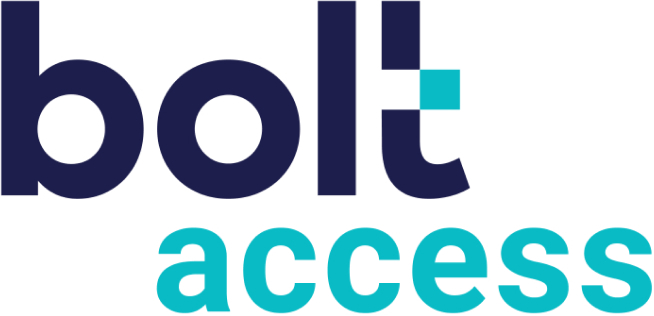
"
Twitter has been and continues to be a leading social media platform for independent agents. Its simple, intuitive interface and real time feed still make it a favorite among users. Roughly half a million tweets are sent daily — about 5,787 per second, Paige Cooper at Hootsuite writes. So there’s plenty of potential for savvy agents who know how to use this platform properly.
At the same time, though, it’s important to avoid some critical mistakes.
Here are 10 Twitter do’s and don’ts to get the most from your efforts.
1. Do Follow Relevant Accounts
A big part of gaining momentum on Twitter is simply being involved. There’s a correlation between the number of people you follow and the number of people who follow you, social media marketer Jayson DeMers points out. So you want to make it a point to follow relevant accounts. For independent agents, these could include insurance influencers, insurance news publications and other agents.
You can find relevant accounts by using the Twitter search function for descriptors, like “insurance agent,” or use a bio search tool like FollowerWonk, explain Stephanie Schwab and Christina Strickland at Crackerjack Marketing. These help you quickly filter through millions of Twitter users and find potential ones to connect with.
2. Don’t Mass Follow
One of the more common shortcuts new Twitter users try is “mass” or “bulk” following. This is where you follow a large numbers of accounts in hopes of a sizable percentage following you in return. It’s basically a way to game the system. But Onur Erginoglu, cofounder of the Twitter web application Circleboom, warns against this approach, saying aggressive following in this manner violates Twitter’s general guidelines. In turn, they may penalize you by filtering your tweets from search results or even suspending your account.
On top of that, it’s simply unethical and is no way to build up your reputation. So be sure you’re only following accounts that you’re genuinely interested in, and you should be good to go.
3. Do Capitalize on Trending Topics
Twitter is often one of the first places news is broken. That immediacy is one of its main selling points, with users able to stay up-to-date on what’s happening.
Capitalizing on trending topics provides the perfect opportunity to reach a large audience, bring exposure to your profile and increase your follower count. So you’ll want to be aware of what’s happening and structure your content strategy accordingly.
Sharing your knowledge about a trending topic is one of the best ways to go about this, explains the team at Twitter hashtag tracking platform, Keyhole. For example, if health insurance was trending, you might tweet a piece of educational information or share a link to a health-related article.
So, how do you find trending Twitter topics? Browsing Twitter Trends from your dashboard is a great starting place, says Jessica Bowers Hopson at Inbound Marketing Agents. She also recommends using Hashtagify — a free tool to see what’s popular at the moment.
4. Don’t Jump in Before Adequately Researching Topics
But there’s a catch. You should only post content about relevant trends in which you have thoroughly researched. This ensures you truly know what’s happening and are in a position to add value to the conversation. Contributing to a topic without doing proper research can quickly backfire, the Keyhole team warns.
Mindless “piggybacking” when you have no real authority on a topic will marginalize your results and can even hurt your reputation.
Don’t post generic content — be creative, says Julia McCoy, founder and CEO of copywriting agency, Express Writers. When tweeting, insert a great quote from the blog post you’re linking to so users know what’s in store and will feel more compelled to click.
5. Do Use Hashtags
“Hashtags are a handy way of grouping and categorizing tweets, and they help people follow topics in which they’re interested,” explains business writer, David Hartshorne. “Anyone searching for a specific topic can find relevant tweets immediately rather than having to scroll through their Twitter feed.”
Hashtags play a vital role in the Twitter ecosystem. Effectively using them is essential for capitalizing on trending topics and getting your content in front of your intended audience.
WordStream founder and Mobile Monkey CEO Larry Kim points out that using hashtags can improve positioning in Twitter feeds, increase impressions and boost engagement. Using one particular hashtag enabled him to reach 106,000 user accounts and generate over 127,000 impressions.
6. Don’t Go Overboard with Them
It’s important, however, to follow best practices when using hashtags. The last thing you want is to go overboard and jam pack your tweets with them. One or two is plenty, advises Amie Detar, digital marketing executive at Posse Social Media. The trick is to do your research and only include hashtags that are hyper-relevant to your post and the insurance industry.
Even though Twitter increased the number of characters allowed in tweets from 140 characters to 280 in 2017, there’s still limited space. So, keep business writer Sharon Hurley Hall’s advice in mind: Use brief hashtags to leave room for text, links and mentions.
7. Do Engage with Relevant Content
The more effort you put into engaging with others on Twitter, the better your results should be. Therefore, it’s crucial that you’re willing to make the first move and reach out to others rather than waiting for them to reach out to you. “Social media is all about connection,” write Corrie Baker and Jesse Mullins, owner of Jemully Media. “If all you ever do is post for your company or about your company, you’re missing the point.”
And this mainly revolves around retweeting. This is the most straightforward way to engage with other users. It puts you on their radar, while at the same time promoting their brand.
Besides helping others and increasing their exposure, retweeting offers some definitive benefits for you as well. Entrepreneur Derric Haynie says it increases account activity, which is important because of the correlation between tweeting frequency and Twitter account growth. It also provides your audience with additional value. Even if you don’t have any new original content to post yourself, you can find something noteworthy to post from a relevant influencer, leading that retweet with your own comment.
Beyond retweeting, you can like and reply to tweets to further engage.
8. Don’t Send Automated Messages
Connections are all about authenticity. The moment you try to force it, things start to go south.
One mistake even the most well-intentioned agents make is sending automated messages after someone follows them. For instance, it may say something like, “Thanks for following us! Here’s a link to our website.” While it’s nice to show your appreciation for someone following you, automated messages tend to do more harm than good, explains Ana Gotter, social media writer at Disruptive Advertising.
Why?
They feel impersonal. Most people can instantly tell when it’s an automated reply, and you didn't actually take the time to respond personally, which can be a big turnoff. And if you include a link to your website, email newsletter or other social accounts, it comes across as being annoyingly self promotional. It feels as if you’re just trying to build up your brand and aren’t genuinely interested in nurturing relationships.
It can cost you too. More than 30 percent of users will unfollow a brand after receiving an automated message, reports Andrea Lehr at HubSpot. While it’s certainly okay to direct message someone on Twitter, only do so if you write it yourself, and make sure it’s personalized to the individual you’re reaching out to.
9. Do Use Visuals
There’s a huge body of data suggesting that Twitter users respond positively to visuals. Tweets featuring images receive a whopping 313 percent more engagement than those without, says Andrew Hutchinson at Social Media Today. Eyeballs naturally gravitate toward these tweets, and they help grab attention in noisy feeds.
But you’re not limited to just images. Hutchinson adds that tweets featuring GIFs receive six times the engagement of those with strictly text, and those with video receive nine times the engagement.
10. Don’t Use Low-Quality or Generic Stock Images
There’s a caveat here though. You need to be cognizant of the quality of your visuals. Unprofessional, sub-standard visuals just won’t cut it and can negate the point of using them in the first place.
And generic stock images are just as bad, according to Jack Simpson at eConsultancy. These tend to fall into one of two categories — cringeworthy lifestyle photography or dull, low-quality graphics. While there’s some level of subjectivity here, it’s pretty easy to spot one of these.
What should you do instead?
Be creative. Simpson says you could potentially take and edit your own images — something that’s fairly easy to do with most modern smartphones. Or you can use a graphic design tool like Canva to create your own images from scratch. They offer a massive library of templates you can use to get started.
Bonus: Do Make Sure You Know Why You're On Twitter
You should also remember that Twitter strategies can vary from agent to agent.
‘“A brand that has a goal of brand management is going to use Twitter in a very different way than a brand that’s using Twitter to drive conversions for customer service,” writes brand strategist Nick Reese. “For example, if your goal is lead gen, not every tweet will have a link to your landing page; some Tweets might be more focused on community engagement or thought leadership.”
It’s vital that you’re super specific about your motives for using this network because it will steer your efforts and ensure you’re focusing on the right tasks.
Images by: sifotography/©123RF.com, rawpixel/©123RF.com, dolgachov/©123RF.com, vadymvdrobot/©123RF.com
"
Talk to an expert
Contact us
